Embrace Timeless Heritage: The Authentic Old Style Ikat Fabric
There are textiles that merely cover, and then there are textiles that tell a story. This exquisite creation from the heart of Uzbekistan is firmly in the latter category. It is a genuine Old style ikat fabric, a masterpiece of heritage and artistry that resonates with the soul of the ancient Silk Road. Looking at its intricate patterns and deeply saturated colors is like peering into a bygone era of opulent courts, bustling bazaars, and masterful artisans who wove magic into every thread.
This is not a reproduction; it is a continuation of a living tradition. The very essence of an Old style ikat fabric lies in its authenticity—in its connection to historical designs and a color palette that speaks of natural dyes and timeless aesthetics. The fabric before you is a perfect embodiment of this spirit. Its dominant, muted teal-blue background provides a sophisticated canvas for the dance of vibrant motifs. Symmetrical patterns in rich mustard yellow and deep, evocative burgundy red create a visual rhythm that is both complex and harmonious. The creamy off-white elements provide moments of visual rest, making the bolder colors pop with even more intensity. This is the kind of textile that transforms a space or a garment from ordinary to extraordinary.
The Soul of the Fabric: A Closer Look at the Design and Color
The pattern of this specific Old style ikat fabric is a journey in itself. It features classic Central Asian motifs, often symbolic and passed down through generations. You can see stylized pomegranate or floral medallions, symbols of fertility, abundance, and life. These are rendered in a powerful burgundy, outlined with cream, making them focal points of the design. Surrounding them are vertical, arrow-like patterns in a striking mustard yellow, which guide the eye along the length of the fabric, creating a sense of elegance and height.
The characteristic “abr” (cloud) effect, the soft, feathery edges of the motifs, is the celebrated hallmark of true ikat. It is a visual reminder of the incredibly complex hand-dyeing process that occurs before a single thread is placed on the loom. This slight imprecision is not a flaw but the signature of a truly handmade work of art, a quality that makes each yard of this Old style ikat fabric utterly unique.
The Adras Blend: 70% Silk and 30% Cotton
The luxurious feel and versatile nature of this textile come from its traditional Adras composition: a 70% silk warp and a 30% cotton weft. This blend is a stroke of genius, perfected over centuries to create a fabric with the best of both worlds.
The Silk (70%): The silk warp threads are the carriers of the vibrant, hand-dyed pattern. They provide the fabric with its signature luminous sheen, its rich depth of color, and its smooth, luxurious feel.
The Cotton (30%): The cotton weft provides structure, body, and durability. It gives the fabric a slightly crisper hand than pure silk, making it more versatile for a wider range of applications, from fashion to interiors. It also tempers the silk’s shine with a subtle matte quality, contributing to the sophisticated, vintage aesthetic.
This masterful blend is what gives an Old style ikat fabric its unique character—a textile that is both opulent and practical, beautiful and strong.
Versatility in Modern Design
The timeless appeal and robust nature of this Adras blend make it a coveted material for today’s designers and creators.
For Statement Fashion: The fabric’s body and structure are ideal for creating garments that hold their shape. Imagine a tailored coat, a structured blazer, a statement skirt, or a sophisticated vest made from this Old style ikat fabric. It’s a way to wear a piece of art, blending ancient heritage with contemporary style.
For Transformative Interiors: This fabric is a dream for interior design. Its durability makes it perfect for upholstery on chairs, benches, or headboards. As decorative pillows, it can introduce a powerful dose of color and pattern to a neutral room. Used as wall hangings or heavy curtains, it creates a dramatic and luxurious focal point, imbuing the space with a sense of history and global sophistication.
Choosing this authentic Old style ikat fabric is a conscious decision to value artistry over mass production. You are not just buying a textile; you are acquiring a piece of cultural history and supporting the artisan communities that keep these ancient traditions alive. Let the heritage, beauty, and unique character of this exceptional Old style ikat fabric inspire your next creation.

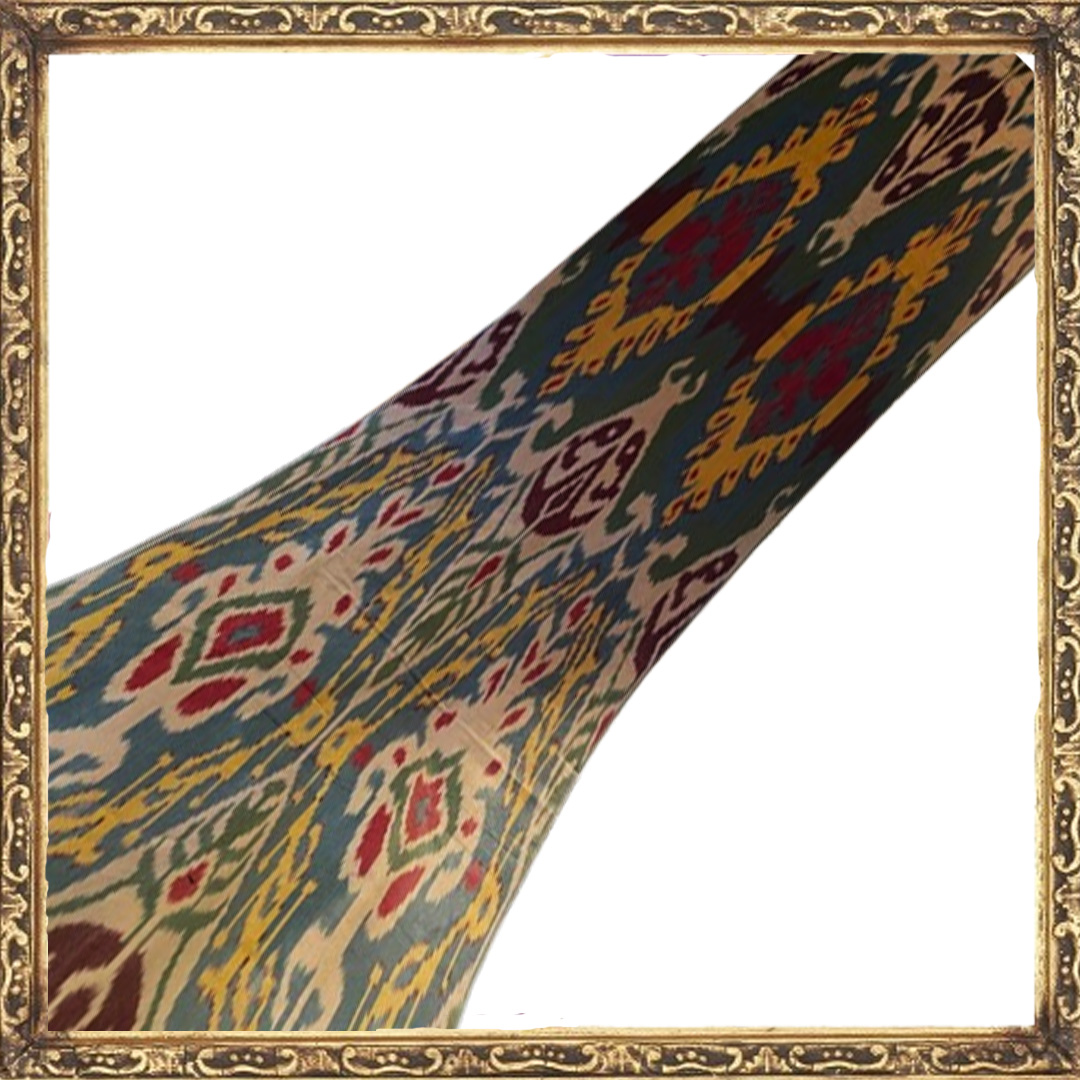
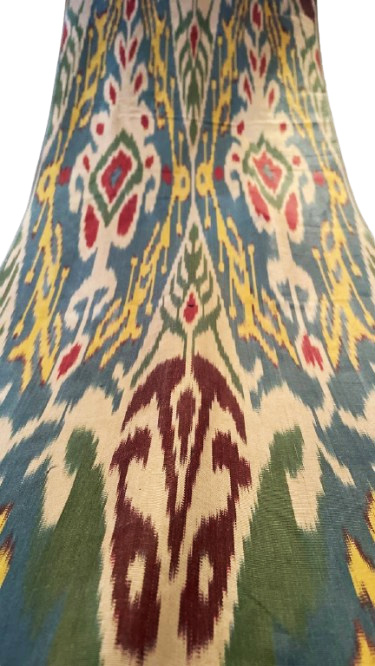

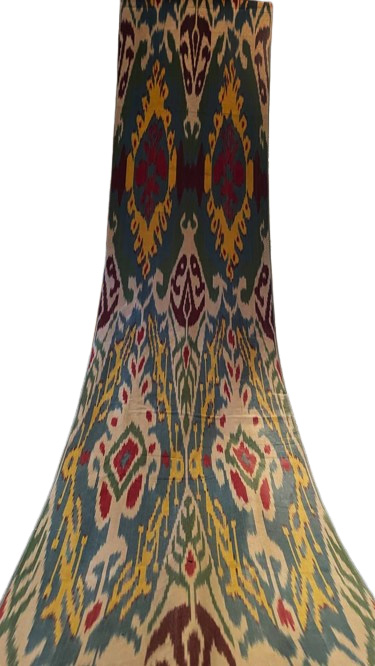
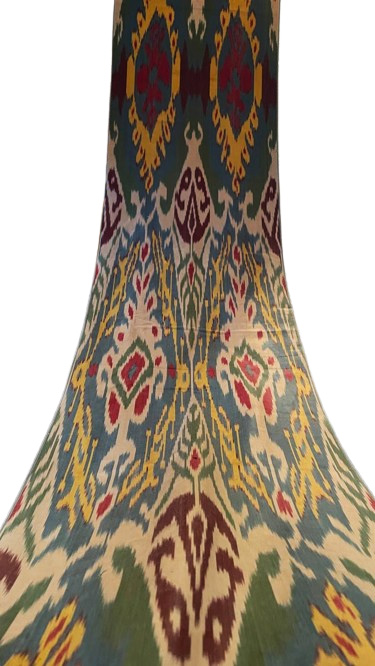
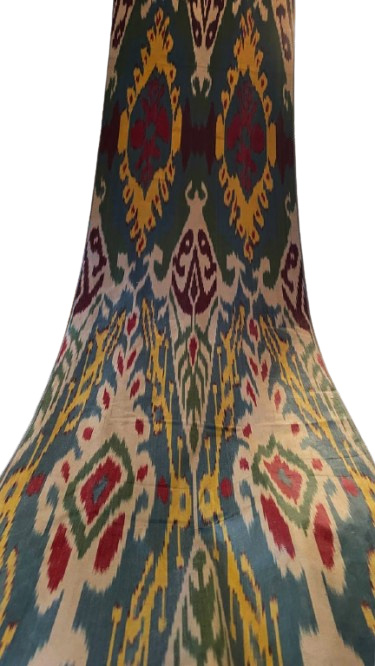




Reviews
There are no reviews yet.